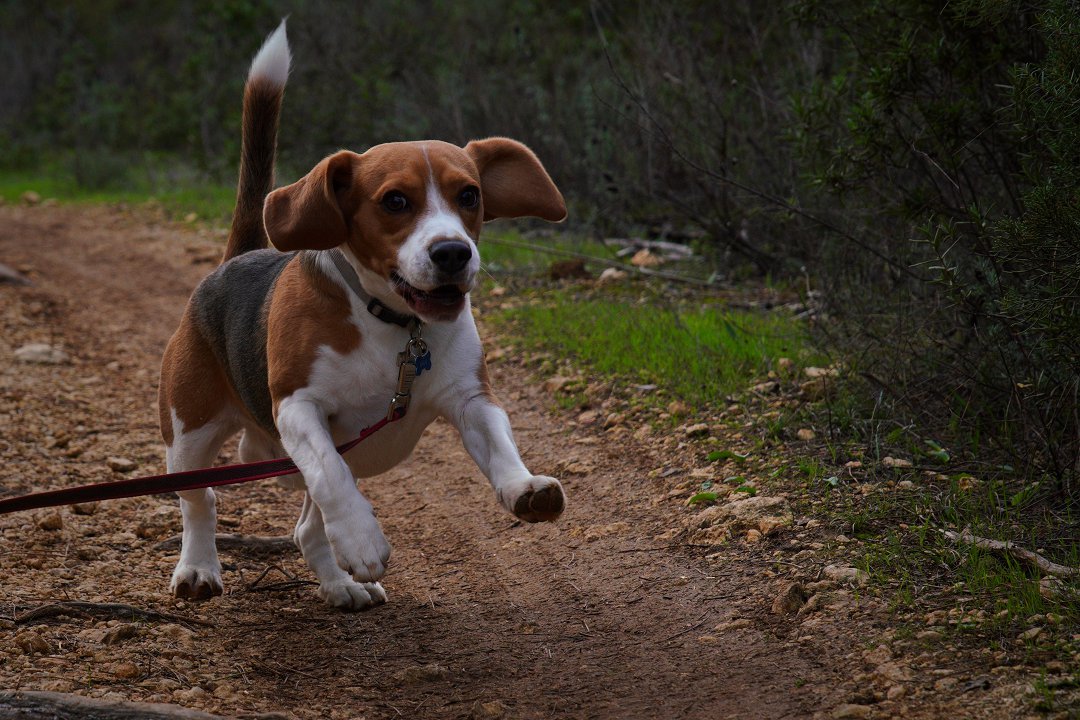Table of Contents
- 1 Introduction: The Benefits of Crate Training for Beagles: A Step-by-Step Guide
- 2 Transitioning Your Beagle from Crate Training to Freedom: When and How
- 3 Creating a Comfortable Environment for Your Beagle: When to Stop Crate Training
- 4 FAQs About: When Do You Stop Crate Training Your Beagle
- 4.1 How do I know when it’s time to stop crate training my beagle?
- 4.2 Should I gradually decrease the duration of crate training sessions?
- 4.3 What signs should I look for to determine if my beagle is ready to stop crate training?
- 4.4 Can I leave my beagle unattended at home once crate training is stopped?
- 4.5 Should I remove the crate completely once crate training is over?
- 4.6 Are there any situations where I might need to reintroduce crate training?
Introduction: The Benefits of Crate Training for Beagles: A Step-by-Step Guide
Are you a proud beagle owner wondering when it’s time to stop crate training your furry friend? Look no further! In this comprehensive guide, we will explore the benefits of crate training for beagles and provide you with a step-by-step process to ensure a smooth transition. Crate training is not only a valuable tool for housebreaking, but it also offers numerous benefits for your beagle’s safety, comfort, and well-being. By understanding when to stop crate training, you can provide your beagle with the freedom they deserve while maintaining a secure and comfortable environment. So, let’s dive in and discover the secrets to successful crate training for your beagle!
Transitioning Your Beagle from Crate Training to Freedom: When and How
Transitioning your beagle from crate training to freedom is an exciting milestone in their training journey. It signifies that your furry friend has gained enough confidence and discipline to be trusted with more freedom around the house. However, it’s important to approach this transition with caution and a well-thought-out plan to ensure a smooth and successful transition. Here are some tips on when and how to transition your beagle from crate training to freedom:
1. Gradual Transition:
- Begin by gradually increasing the amount of time your beagle spends outside the crate. Start with short periods, such as 15 minutes, and gradually extend the duration over several days or weeks.
- Monitor your beagle’s behavior during these periods of freedom. If they exhibit signs of anxiety or destructive behavior, it may be an indication that they need more time in the crate before transitioning further.
2. Baby Steps:
- Start by allowing your beagle to roam freely in a small, puppy-proofed area of the house. This could be a gated-off section of a room or a playpen. Ensure that the area is safe and free from any hazards or valuable items that could be damaged.
- As your beagle demonstrates good behavior and responsibility in this confined space, you can gradually expand their freedom to larger areas of the house.
3. Supervision is Key:
- During the transition phase, it’s crucial to closely supervise your beagle whenever they are outside the crate. This will allow you to intervene and redirect any unwanted behavior promptly.
- Keep an eye on their bathroom habits and take them outside for regular potty breaks to avoid accidents.
4. Use Positive Reinforcement:
- Reward your beagle with praise, treats, or playtime when they exhibit good behavior during their freedom periods. This positive reinforcement will help reinforce their understanding of what is expected of them.
Remember, every beagle is unique, and the duration of crate training to freedom transition may vary. Some beagles may be ready for more freedom after a few weeks, while others may require several months. Pay attention to your beagle’s progress, behavior, and comfort level to determine the best timing for them.
As your beagle becomes more comfortable and trustworthy, you can gradually increase their freedom until they can roam the house without supervision. However, it’s essential to remember that even after transitioning from crate training, your beagle may still benefit from occasional crate time for relaxation or when you’re away from home.
In the next section, we will discuss creating a comfortable environment for your beagle and when it’s appropriate to stop crate training altogether. Let’s dive in and explore the next steps in your beagle’s training journey.
Creating a Comfortable Environment for Your Beagle: When to Stop Crate Training
When it comes to crate training your beagle, it is essential to create a comfortable environment that promotes a positive association with the crate. This will not only ensure your beagle’s safety and well-being but also make the transition from crate training to freedom much smoother. So, when should you stop crate training your beagle? Let’s explore some factors to consider.
1. Age and maturity level
Beagles, like any other dog breed, reach different stages of maturity at varying ages. While some beagles may be ready to transition out of crate training at around six months old, others may require a bit more time. It’s important to assess your beagle’s individual progress and behavior to determine if they are ready for more freedom.
2. Behavior and reliability
Before you stop crate training, it’s crucial to evaluate your beagle’s behavior and reliability when left alone. If your beagle consistently demonstrates good behavior, such as not chewing on furniture or having accidents, and can be trusted to roam freely without causing any trouble, it may be a sign that they are ready to move on from crate training.
3. Gradual transition
To ensure a successful transition, it’s best to gradually increase your beagle’s freedom outside the crate. Start by leaving them alone for short periods in a safe, puppy-proofed area of your home. Monitor their behavior and gradually increase the duration of their freedom. If they continue to exhibit good behavior and can handle longer periods without any issues, you can slowly phase out the crate.
4. Safety precautions
Even after you stop crate training, it’s important to take certain safety precautions to ensure your beagle’s well-being. This includes puppy-proofing your home, removing any potential hazards, and providing them with a comfortable space to rest and relax. Consider using baby gates or closing off certain areas of your home to prevent access to off-limit areas.
5. Monitoring progress
After you’ve stopped crate training, it’s crucial to continue monitoring your beagle’s progress and behavior. Keep an eye out for any signs of regression or behavior issues. If problems arise, you may need to reintroduce the crate temporarily or seek professional guidance to address any underlying issues.
Remember, every beagle is different, and the timeline for stopping crate training may vary. It’s important to be patient, observant, and responsive to your beagle’s needs throughout the training process. By creating a comfortable environment and gradually transitioning your beagle from the crate to freedom, you can ensure a successful and positive training experience.
FAQs About: When Do You Stop Crate Training Your Beagle
How do I know when it’s time to stop crate training my beagle?
It’s important to observe your beagle’s behavior and progress during crate training. Once your beagle consistently demonstrates good behavior, such as not having accidents or destructive behavior, both inside and outside the crate, it may be a sign that they are ready to transition out of crate training.
Should I gradually decrease the duration of crate training sessions?
Yes, gradually reducing the duration of crate training sessions can help your beagle adjust to more freedom. Start by gradually increasing the time your beagle spends outside the crate while closely monitoring their behavior. If they continue to exhibit good behavior, you can gradually decrease the duration of crate training sessions.
What signs should I look for to determine if my beagle is ready to stop crate training?
Signs that your beagle may be ready to stop crate training include consistently demonstrating good behavior, such as not having accidents or destructive behavior, and being able to settle down calmly outside the crate. Additionally, if your beagle is comfortable being left alone without exhibiting anxiety or distress, it may indicate readiness to stop crate training.
Can I leave my beagle unattended at home once crate training is stopped?
While it may be tempting to leave your beagle unattended at home once crate training is stopped, it’s important to gradually introduce them to being left alone. Start by leaving them for short periods of time and gradually increase the duration. This helps prevent separation anxiety and ensures a smooth transition.
Should I remove the crate completely once crate training is over?
Removing the crate completely is not necessary. Instead, consider keeping the crate accessible as a comfortable and familiar space for your beagle. Leaving the crate open allows your beagle to choose whether they want to use it as a cozy den or not. Remember, beagles often enjoy having a safe and secure place to retreat to.
Are there any situations where I might need to reintroduce crate training?
Yes, there may be situations where you need to reintroduce crate training. For example, if your beagle starts exhibiting behavior problems or experiences a major life change, such as moving to a new home. In these cases, reintroducing crate training can provide a sense of security and help address any issues that may have arisen.






Leave a Reply